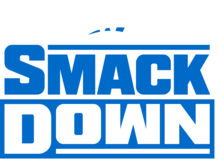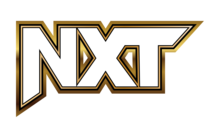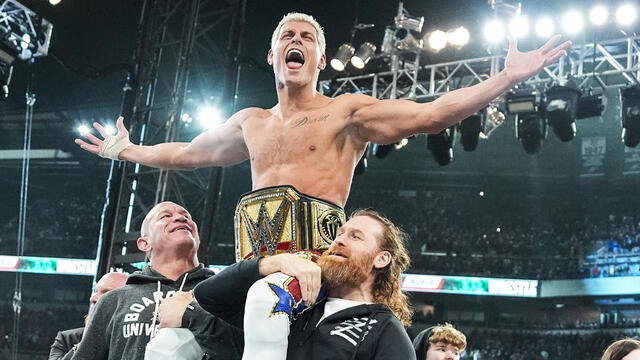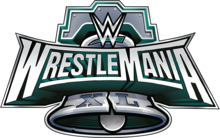
Beast for Business: How WWE signed (and kept) Brock Lesnar in 2002

“Did you see that guy from Minnesota?”
To hear Gerald Brisco tell it, Jim Ross called him after the 2000 NCAA Division I Wrestling Championships to ask him that very question.
Brisco, who worked for the former head of WWE’s Talent Relations department as an agent and scout, knew exactly the grappler whom the WWE Hall of Famer was referring to: “Yeah. Brock Lesnar.”
“We need him,” commanded Good Ol’ J.R., but Brisco was already on top of it. In fact, he’d had the word out for a year; he was just waiting for Brock to call him back.
If that sounds strange for a recruiter, to a degree, it is. But make no mistake: It’s about the least-strange thing about Lesnar’s WWE development, a process so unconventional and controversial that it quite literally has yet to be duplicated — both for better and for worse.
For a Superstar as unique as Brock Lesnar, it’s not surprising that, even in the pre-NXT era, his origin story as a WWE talent stands out. Very few have been sought out so doggedly and nurtured so carefully as the volatile five-tool prospect who would go on to make history as the only athlete to win the NCAA, UFC and WWE heavyweight championships.
Brisco had his eye on the future Beast Incarnate after Lesnar — then 20 pounds of muscle lighter but no less impressive as an athlete — fell short of the NCAA title in his junior year. But Lesnar was already notoriously fickle, and his coach, J Robinson, didn’t want his star taking his eye off the ball during a senior campaign that had the potential to net both an individual and a team title. In fact, Brock never even knew WWE was interested, and Robinson, who was coincidentally Brisco’s old wrestling teammate at Oklahoma State, made it quite clear that he wanted it to stay that way.
Where he was different was he
was so damn special.
“J said, ‘He’s got another year for me,’” Brisco remembered. The coach even went so far as to place an embargo on Lesnar until his senior season was over, but Robinson did so with the intentions of making Brock available when the time was right. Surprisingly, Brisco wasn’t the only one in WWE with his eye on Lesnar; future advocate Paul Heyman was also aware of the wrestler who would become his client even before The Beast Incarnate reached the Division I mountaintop and captured the heavyweight title.
“I was a huge admirer of Brock Lesnar’s potential,” Heyman told WWE.com of his first exposure to The Beast. “When he conquered the world of amateur wrestling, I was already onboard as a card-carrying member of the Brock Lesnar fan club.”
Brisco, of course, was a member of the same fan club, but unlike Heyman, he already had some skin in the game. By the time J.R. called to ask about Lesnar, it was the Sunday after the NCAA tournament and Brisco was waiting for Robinson’s promised phone call.
“I was getting a little antsy,” Brisco said with a laugh. But the scout’s patience paid off when Robinson finally called back on Tuesday with better news than Brisco could ever have imagined.
“He said, ‘You remember our conversation?’ I said, ‘I sure do. I’ve been waiting on your call,’” Brisco recounted. “He said, ‘Well I happen to have two of ‘em. I got Shelton Benjamin, who’s the only guy I’ve ever had that can hang with Brock Lesnar in the wrestling room and that could push Brock to be a champion, and Brock. I got ‘em both sitting here together. They want to come together.”
“My blood started rushing,” Brisco said of Robinson’s news. “I thought, ‘I’m getting two-for-one here. That’s fantastic.’”
Of course, there were plenty of hurdles to be cleared before the two studs could so much as step foot in the ring. Brisco brought Robinson, Lesnar and Benjamin backstage at a local pay-per-view and gave them a quick overview of the world they’d potentially be inhabiting. Once the usual questions were answered — what does one do in the ring; how long does it take to learn — Brisco said it was relatively easy to get the two prospects’ verbal commitment.
“It wasn’t a hard sell,” he said. Apart from giving the two star athletes an opportunity to continue in a physical occupation, the two were eager to showcase their abilities on a global stage.
“Both of them were fans and both of them looked at our business as a way they knew they could succeed in life,” Brisco said.
He was getting terrible advice
from myopic veterans who had never
seen anything like Brock Lesnar.
Even during that brief backstage meeting, signs of future success were there, complete with a consideration that few talents received.
“Vince [McMahon], when he sees guys, very rarely does he come over and introduce himself or talk to guys or anything like that. Especially people that he doesn’t know,” said Brisco. “But he saw Brock Lesnar and Shelton Benjamin standing there … and he came over and introduced himself.”
According to Brisco, The Chairman had only one question for his newest recruit: “Are you ready to be an entertainer?” The response was a slam dunk: “I’ve always wanted to be an entertainer.”
“[That was] one of the most intelligent things for a 20-year-old to say to a man of Vince McMahon’s status,” Brisco said. “That brought a smile to Vince’s face, [he] walked away and I said, ‘I think you just got a job.’”
The deal was this: Down to Ohio Valley Wrestling, two years of training — three, max — and a move up to the main roster. Get ‘em in, get ‘em out, get ‘em on the road. “Anything else,” Brisco said, “You’re costing yourself money and the company money.”
Benjamin, initially, was the more proficient of the two, though Lesnar quickly caught up and it didn’t take long until they were the top two prospects in the class — an already stacked group that included future World Champions John Cena, Randy Orton and Batista. Then, things quickly got complicated.
“One day I get a call, and it’s Brock. He’s really frustrated,” Brisco said. “[He] wanted to leave.”
Both Lesnar and Benjamin — who had been working as a tag team called The Minnesota Stretching Crew — had progressed so far past their fellow recruits that their development had plateaued. Nobody else could hang with them.
“Brock said, ‘I’ve got other options,’” Brisco said. “It wasn’t an ultimatum or anything, it was just him giving me his lay of the land and telling me what’s going on. He said, ‘I want to be out of here in two months. We’re ready for the main roster.’”
He said, I want to
be [on the main roster]
in two months.
Brisco quickly verified that Lesnar and Benjamin were, indeed, the two best guys in the group, but there was still some internal trepidation about bringing them up so fast.
“With somebody like Brock Lesnar, you don’t want to bring him up and not have him be ready,” Brisco said. “You don’t want him to have a bad outing. First impressions are what’s stuck with you.”
It was around this time that Lesnar and Heyman formally met in a conversation The Mad Scientist described as “a bit tense” thanks to Heyman’s … pronounced views on Lesnar’s training up to that point.
“He was getting terrible advice from myopic veterans who had never seen anything like Brock Lesnar because there is nothing and no one like Brock Lesnar,” Heyman explained. “[It was] every narrow-minded, draconian view of a big man in the business. ‘Just stand in the middle of the ring and let everybody bounce off you,’ ‘You move too fast,’ ‘Don’t let people know you can move this fast.’”
Given that Lesnar quickly found a kindred spirit in Heyman thanks to their shared view of the sports-entertainment business — “Box office comes first and foremost and everything else is secondary and subject to interpretation” — The Beast found himself realizing that he would have to pick and choose when it came to absorbing the lessons he was receiving in order to make himself more marketable.
“Here we had, without question, the most physically impressive athlete to enter WWE in ages and the single most gifted athlete at the very same time. They don’t usually go together,” Heyman said. “Not to highlight the athleticism of this NCAA athlete, Division I heavyweight champion is to leave untold billions on the table. [So] the advice I gave was quite simple: We need to highlight your athleticism in conjunction with your size and look to where people say, ‘I’ve very rarely seen someone this big, but never someone this big who can move like that.’”
Even Brisco admitted that “the business side” of Lesnar had started kicking in at this point, and by the time Lesnar was brought on the road to wrestle a series of untelevised matches, that “judicious implementation” had taken hold. From the word jump, the young talent was already putting on miniature spectacles unheard of for a big man that had the crowd oohing and ahhing despite not having a clue who he was. The reaction continued once Lesnar finally appeared on TV.
“When Brock went out it was the same response we got down there in OVW, but just on a bigger scale: Where the hell did this guy come from?” Brisco said.
After a thunderous debut the night after WrestleMania, WWE had its Next Big Thing. Heyman was paired with Lesnar as his manager — he prefers “agent” since he never got physically involved in the matches — but sailing wasn’t always smooth and there were early indications that the relationship between Lesnar and WWE would be too tenuous to last in the long term.
You don't get a guy like that every day,
and I'm still looking.
It’s well-known now that Lesnar was not a fan of the constant travel his life as a Superstar demanded, a disconnect that Heyman attributed to a fundamental misunderstanding of his client as a box-office attraction.
“Brock Lesnar should not be performing 300 days a year,” Heyman said of The Beast’s first run in 2002-04 when abbreviated schedules were all but unheard of and Lesnar was expected to play the game. “It takes away from the selling point of how rare of an opportunity you have to see, in my opinion, the single most unique athlete in the history of WWE. The mix of Brock Lesnar and this industry wasn’t ready to be stirred.”
Even Brisco admitted that, talent-wise, Brock was something of an anomaly among the WWE locker room.
“Each one of these kids are different and each one has unique issues,” Brisco said. “Where he was different he was so damn special.”
It’s likely that Lesnar knew it, too. The thunderous reactions had led to the consensus that “this guy’s going to the top right away,” a heavy burden for a young man of any talent level.
So Brisco, for his part, tried to serve as a calming presence for The Beast and help speed along his maturity, which he knew from conversations with J Robinson was an issue from the beginning.
“Every Monday I would grab him, we’d go up to the top of the arena, just him and I,” Brisco said. “We’d sit there and talk an hour, hour-and-a-half, two hours. Sometimes longer.”
The mix of Brock Lesnar and this industry wasn't ready to be stirred.
Brisco would address Brock’s various concerns — sometimes at ungodly hours of the morning — to help coach Lesnar along in his development as a Superstar. Given that the young champion could be as incorrigible as ever when he wanted to, it wasn’t always an easy task.
“You had to really get into his head,” Brisco said. “I was worried about the maturity, but after about a year or so with the main roster and him touring with them and becoming an experienced guy on the road, all those maturity problems went away and he’d become a team player.”
With maturity, ultimately, comes recognition of opportunity. For around two years, Lesnar toed the line until he departed WWE for stints in the NFL and UFC that saw him win the heavyweight championship in the latter organization despite suffering from diverticulitis.
After Lesnar had retired from the Octagon in 2012, he made his return to WWE — this time, on a shortened schedule that Heyman said was better for everyone involved.
“Fifteen years later, where the schedule meets the athlete and the athlete meets the schedule and all parties benefit from it, is where I think we have finally found a time and place where both WWE and Brock Lesnar mutually benefit from the select schedule and the rare opportunity that the public has to see this once-ever athlete in action,” Heyman said.
“You don’t get a guy like that every day, and I’m still out there looking,” said Brisco, who does, indeed, continue in his capacity as a talent scout. “We knew what we had when we heard that crowd the first time.”
So, what did it take to sign a guy like Brock Lesnar? The short answer? Whatever needed to be done. For Heyman, it was only natural given both Lesnar’s talent and, more importantly, his drive.
“I found Brock Lesnar’s goals to be quite realistic. He wanted to conquer the universe,” Heyman said. “And I dare suggest he has always been quite capable of doing so.”
He knew it, too. So did WWE. The rest, as they say, is history.
WWE Shows Latest Results
Raw results, April 15, 2024: Chad Gable viciously attacks Sami Zayn after losing to Zayn in Intercontinental Title Match!
Full ResultsSmackDown results, April 12, 2024: LA Knight and AJ Styles earn victories for a chance to challenge Cody Rhodes at WWE Backlash!
Full ResultsWWE NXT results, April 9, 2024: Carmelo Hayes wants Trick Williams in a Steel Cage Match
Full Results
















